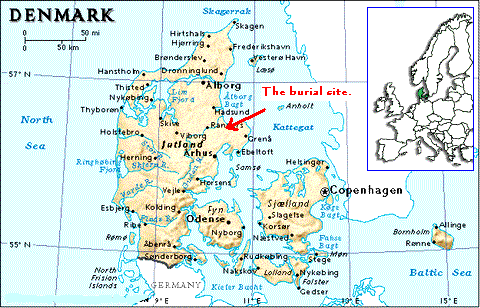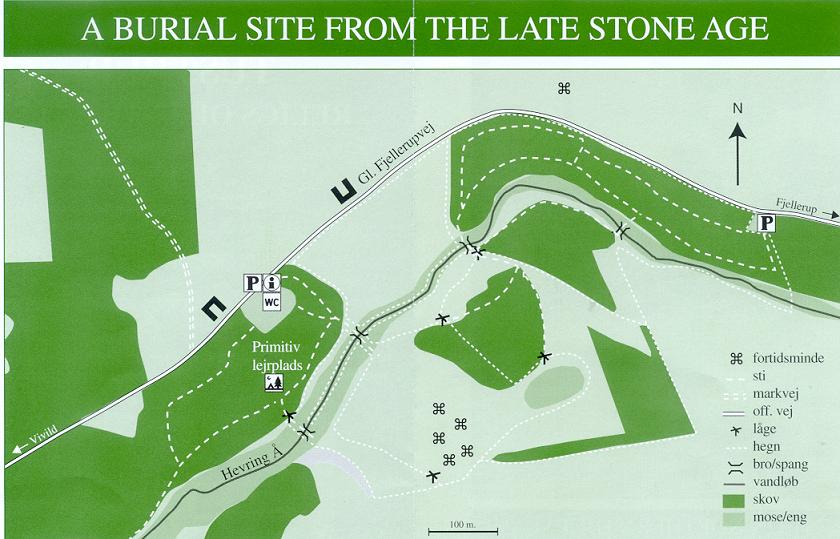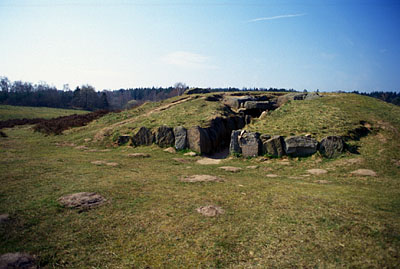
The Burial site
The burial site on the tableland along the Hevring stream was etablished by the first Danish peasants, the so called Beaker culture, some 5.200 years ago. The Beaker culture cleared the forest using flint axes, and commemorating the deceased it built some of the most impressive megalith tombs known to us from prehistoric Denmark.
The site is located here:

Around a temple-like worship house, 2 round dolmens and the biggest passage grave in eastern Jutland, made of stones each weighing several tons, where erected with great precision. Moreover, the pasage grave was equipped with a small side-chamber.
In the worship house and at the entrance to the graves, food- and drink offerings for the deceased and for the gods where placed inside the most beautiful ceramics known to us from that age.
The dolmens and the passage grave were preserved already in 1887, but when the area around the graves was being ploughed in 1953, the owner struck huge stones. this was to become the start of the excavation of the totally unknown worship house and later on of the dolmens and the passage grave.
The artefacts can be witnessed in the exhibition at The Prehistoric Museum, Moesgaard in Aarhus, which was in charge of the excavation. Futhermore, a complete reconstruction og the worship house has been erected near the museum.
At Tustrup, once the excavation was finish, the graves and the worshiphouse were rebuilt with the original stones and the area preserved. Since then, as a part of the restauration work carried out by The National Forest and Nature Agency in 1994, a few of the passage grave footstones, the dolmen cap-stone and the dry-stone wall between its barrow stones have been added.


Enterence to burial-chamber